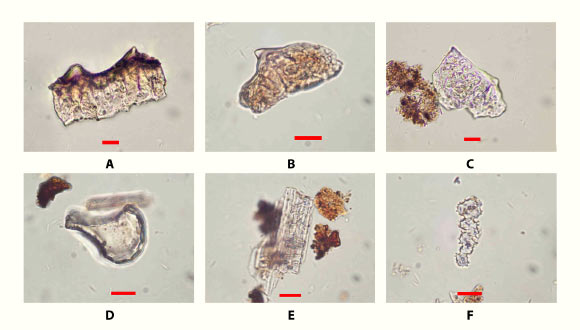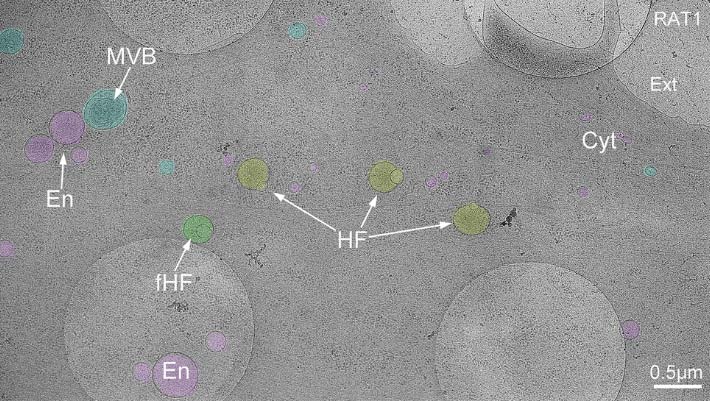Rice was a staple crop in the ancestral Austronesian regions of Taiwan and Island Southeast Asia, but it was unknown in any of the Pacific Islands at the time of European encounters, with the exception of the unique case of Guam and the Mariana Islands. New research by scientists from Guam, China and Australia confirms the presence of abundant rice husk and leaf phytoliths adhering to red-slipped pottery found in Ritidian Beach Cave in Guam, dated by radiocarbon to 3,500 to 3,100 years ago.
The question of early rice in the settlement of the Pacific Islands links to the larger context of rice as a staple food among the ancient Austronesian-speaking peoples, responsible for the world’s most widespread language family before the overlay of global colonial expansions.
Although Austronesian people grew rice since at least 4,800 years ago in Taiwan, the cultivation apparently declined among the communities beyond eastern Indonesia into the Remote Pacific Islands.
Ancestral Austronesian populations migrated from Taiwan through the Asia-Pacific region, starting around 4,200 years ago.
These early islanders brought domesticated rice from Taiwan, traced back to a source in the middle Yangtze Basin of mainland China.
Within this context, the role of rice in Guam and the Mariana Islands in western Micronesia has attracted intense attention, as the Marianas were the only islands in Remote Pacific Oceania where people grew rice, attested at least as early as the documentary records of the 1500s through 1600s.
“The findings offer new clues about ancient migration and culture,” said Dr. Hsiao-chun Hung, an archaeologist at Australian National University.
“Until now, archaeological evidence has revealed only rare traces of rice in the remote Pacific dating back perhaps 1,000 to 700 years ago — so the evidence we’ve found pushes that timeline back significantly.”
Rice phytoliths from excavations at Ritidian Beach Cave, Guam. Scale bars – 10 μm. Image credit: Carson et al., doi: 10.1126/sciadv.adw3591.
Dr. Hung and her colleagues found the ancient remains of rice in Ritidian Beach Cave in northern Guam, a site that still holds cultural significance today.
“While rice was a daily staple in many ancient Asian societies, this discovery indicates that in the remote Pacific it was treated as a precious commodity, reserved for ritual use rather than being consumed daily,” Dr. Hung said.
“We haven’t found any evidence of ancient rice fields, irrigation systems or harvesting tools in Guam.”
“Our findings support the idea that the first Pacific Islanders transported rice with them from the Philippines across 2,300 km of open water — the longest known ocean voyage of the time.”
“It demonstrates not only their advanced navigation skills but also their foresight in preserving and transporting precious resources across vast distances. It highlights how important rice must have been.”
“Ritidian Beach Cave provides a unique insight into the lives of the first inhabitants of the area, as most other cave sites in Guam were disturbed during and after the Second World War.”
“Despite many years of work at open-air sites we found no evidence of early rice use until now.”
“This discovery points to a deep and enduring connection to ancestral traditions and an Asian homeland.”
“The rice husks were found in the site’s oldest cultural layer and were dated using a series of advanced techniques, including radiocarbon dating of surrounding human rubbish mounds — known as middens.”
“People probably cooked the rice elsewhere, away from the cave, as grain processing and cooking undoubtedly would have left behind other traces.”
“A damp cave environment would have been unsuitable for storing unprocessed rice in pots.”
“The ancient rice remains were found only on the surfaces of the pottery, ruling out ordinary food storage.”
The discovery is reported in a paper in the journal Science Advances.
_____
Mike T. Carson et al. 2025. Earliest evidence of rice cultivation in Remote Oceania: Ritual use by the first islanders in the Marianas 3500 years ago. Science Advances 11 (26); doi: 10.1126/sciadv.adw3591

























